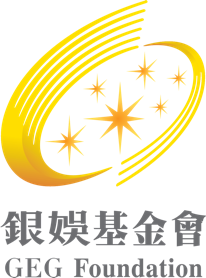GEG Intangible Cultural Heritage Scheme
Scheme Background
Tourism is Macau’s main industry, with the integrated resorts being the major drivers within the industry. The Government’s efforts to diversify tourism offerings continue to be a priority as it strives to maintain Macau’s position as a global tourists’ destination, with cultural offerings being its recent emphasis.
Macau, known for its cultural co-existence, is home to a variety of folk customs. The city’s cultural heritage is an important part of its identity and continues to be embedded in the daily lives of its citizens. Chinese and Western cultures have taken root and have evolved in Macau for over four centuries, nurturing the unique cultural landscape of Macau and its own precious intangible cultural heritage. Both tangible and intangible cultural heritage play important roles in the development of Macau and contribute to the local culture and practices that we have today.
Intangible cultural heritage refers to the practises, representations, expressions, knowledge and skills, as well as the associated instruments, objects, artefacts and cultural spaces, that are considered component parts of cultural heritage by communities, groups and, in some cases, individuals. Cultural intangibles are passed down from generation to generation, and constantly recreated by communities, groups and individuals in response to their environment, their interaction with nature and their history, and provide people with a sense of identity and continuity. Cultural intangibles therefore include oral traditions, performing arts, social and religious practices, rituals, festive events, knowledge and practices concerning nature and the universe, as well as traditional craftsmanship.
Since the 2006 UNESCO Convention for the Safeguarding of the Cultural Intangibles, the Cultural Affairs Bureau, through its Department of Cultural Heritage, has set out to promote, classify and create an inventory of Macau’s Cultural Intangibles. Currently, twelve elements have been inscribed as cultural intangibles in Macau by the SAR Government, but it is believed that there are still many more valuable cultural intangibles items which are yet to be discovered, researched, documented and listed.
GEG Intangible Cultural Heritage Scheme Facebook page:
Scheme Partners
Hulu Culture Promotion Association

Scheme Implementation
Macau is a city with a rich cultural heritage; in 2005, the Historic Centre of Macau was inscribed on the UNESCO World Heritage List. It is therefore an ideal place to pursue heritage tourism, an important component of which is Intangible Cultural Heritage.
The Foundation is keen to contribute towards preserving Macau’s cultural heritage as it currently faces the possibility of losing cultural intangibles if preservation is neglected, and items which are now only known or practised by elderly residents in the community may be lost forever if it is not passed onto our “next generation”.
The GEG Cultural Intangibles Scheme partners with Hulu Culture Promotion Association, to preserve and promote intangible cultural heritage topics, so that they can be documented and passed onto future generations. The Foundation hopes that with the various activities – research, exhibitions, workshops, live demonstrations, etc. – offered though the Scheme, we will enable local residents as well as tourists to better understand and develop a sense of appreciation and understanding of the importance and value of Macau’s cultural intangibles, and that it will generate interest in and increase public awareness towards these precious heritages.
Past Events
Cheongsam Workshop June 20-21 2020 – Mandarin House
The term cheongsam is a romanisation of the Cantonese words 長衫, literally translated as “long shirt/dress”, which was popularized in Shanghai in the early 1920s. Originally, the term Cheongsam refers to an exclusively male garment, with the female version formally known as the qípáo (旗袍).
The making of Chinese style Cheongsams involves complex and meticulous tailoring, which requires well-honed and refined techniques acquired through years of apprenticeship and experience. The tailoring of women's cheongsams accentuates the figures of women, while men's gowns symbolizes a certain status in society, of being learned and cultured. Cheongsams for brides becomes an even more elaborate and traditional form of the attire, called Qún Guà (裙褂).
